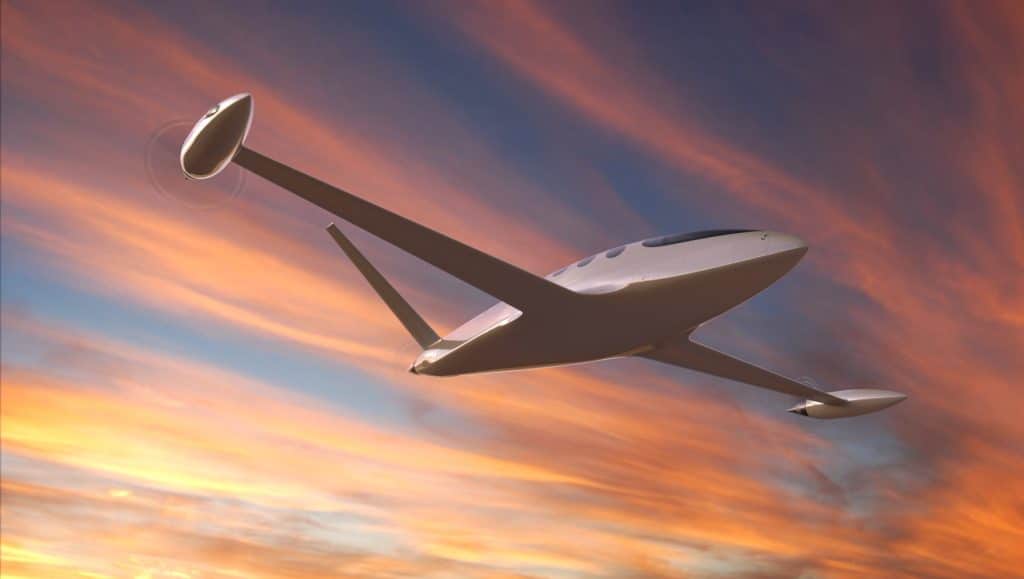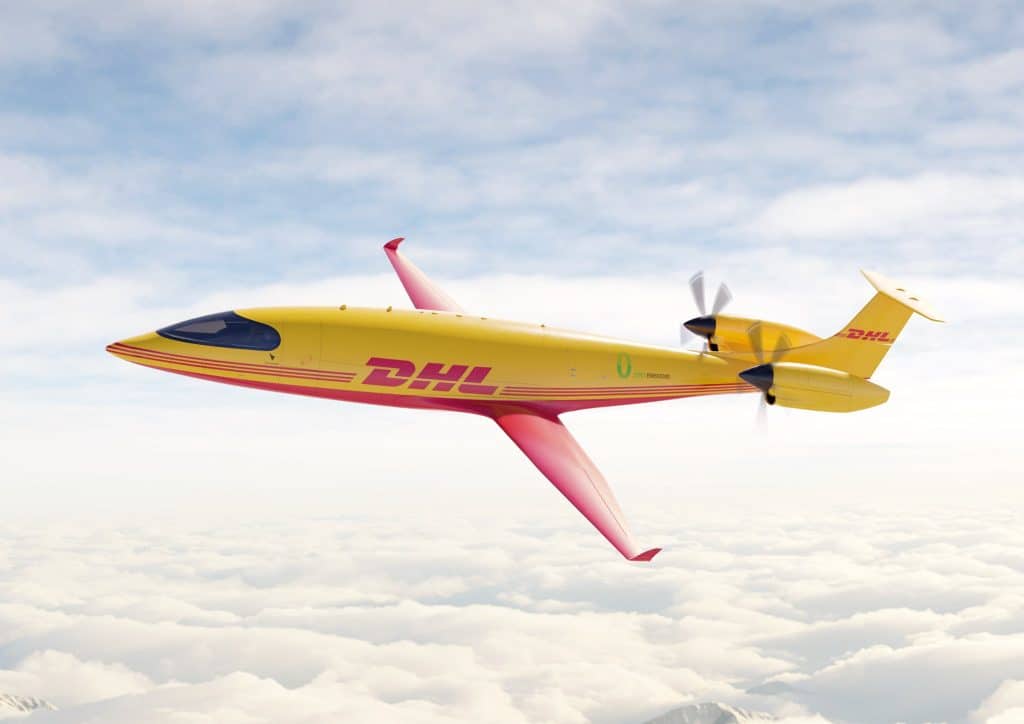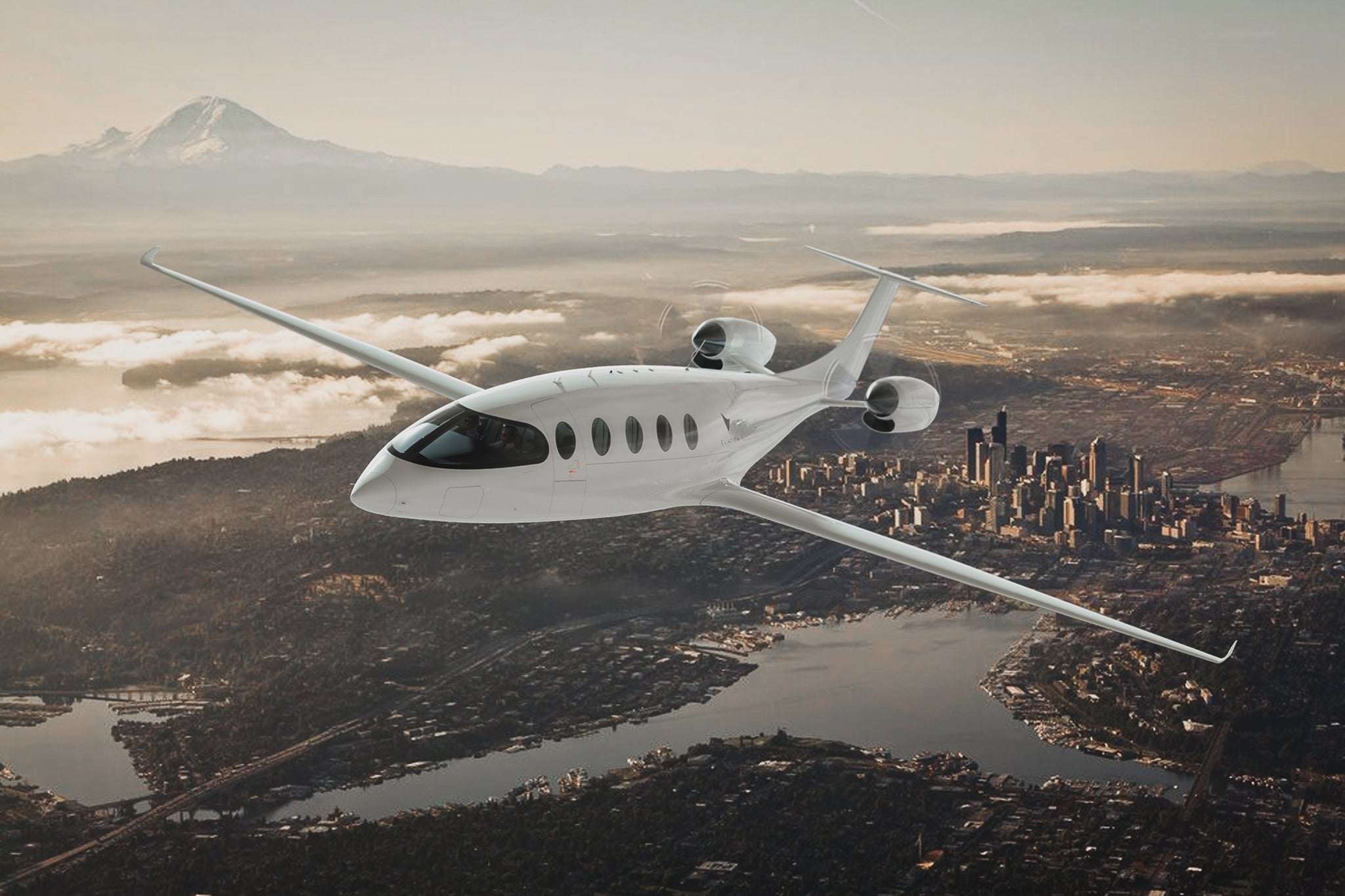The Alice, the world’s first all-electric passenger plane developed by the Israeli company Eviation, is preparing for its first flight.
The nine-passenger all-electric plane The Alice, is preparing for its first flight, expected to happen within the next few weeks, according to its parent company Eviation.
Debuting in 2019, a prototype of the plane has been taking low-speed taxi tests since December; it will attempt a high-speed taxi over the next few weeks, so the company can test different speeds, monitor steering, and braking capabilities, among other functions.
According to Eviation, there are three versions of The Alice prototype, including a commuter plane that can hold nine passengers plus two pilots and 850 pounds of cargo. There’s a roomier executive design that holds six passengers. And a third design is cargo only. Eviation says it’s aiming to be able to carry 20-40 passengers within the next decade.
The Alice
The Alice plane runs on a battery similar to electric cars and has a maximum cruising speed of 287 miles per hour, less than half of that for the Boeing 737. Once in the air, the battery power will power the plane for about an hour.
Eviation says the plane decreases maintenance and operating costs compared with commercial jets by up to 70 percent.
Test flights were slated for last month, but poor weather delayed the effort. The plane is expected to make its first flight in Washington State.

“I’m having a hard time committing to a date for first flight,” Eviation CEO Omer Bar-Yohay told Flying in January. “but I can say that we are about 5 to 6 [nice weather] testing days away from starting the flight campaign. We won’t do it a second before we feel safe and ready, but once we do, the Alice will fly and test often.”
The Alice went on a low-speed taxi test on December 17th, 118 years after the Wright Brothers first tested their airplane.
“December 17th, 1903 was a historic day as the Wright Brothers changed the world forever with the first powered flight. We just taxied Alice yesterday…no big deal,” Bar-Yohay Tweeted along with a video of the test.
Electric aircrafts
The news comes after Rolls-Royce’s electric-engine-powered Spirit of Innovation broke two world speed records. That plane runs on a 500-horse power (400-kilowatt) electric powertrain. A single 30-minute charge can power a flight from London to Paris—nearly 230 miles.
Last September, NASA invested $253 million into GE Aviation and magniX with a goal of bringing electric aircraft to the U.S. industry by 2035. According to CNN, Boeing is investing $450 million in Wisk Aero, “a company building an all-electric, autonomous, passenger aircraft, and Airbus has been working on its own electric aviation endeavors since 2010.” JetBlue is also working on electric prototypes.
It’ll be years though before the technology can power longer and heavier flights, experts say. The aviation industry has, in the meantime, looked to sustainable jet fuel as a viable alternative. United Airlines made its first flight late last year from Chicago to Washington D.C. Per current regulations, fuel can’t exceed 50 percent sustainable sources. But the industry is hopeful that will soon change.

The aviation industry accounts for about two percent of all greenhouse gas emissions and 2.5 percent of carbon emissions. In the U.S., aircraft produce about 3 percent of total carbon emissions and 9 percent of all transportation emissions. The industry is looking at a number of ways to mitigate its impact, including offsets and carbon capture technologies.
Last month, Air France added a sustainable fuel surcharge to all flights. It’s also helping passengers offset their carbon emissions.
But for Eviation and others in the electric plane space, the future is electric, even if FAA regulations are years away still.
“It really integrates aviation into the fabric of transportation, of our commuter life. It does so while being sustainable, and through being economically viable,” said Bar-Yohay. “Once we start seeing planes like this, the entire way we look at where we live, how we commute, how we go on vacation, will change. It will be a high-speed train without the rail.”
But electric aircraft big enough to rival large passenger jets may still be a ways off.”The first step would be to try these in a commuter market or charter market,” said Aimer. “Then eventually, if that works well, you’re going to have passenger jets. For that we need Boeing or Airbus to come out with a actual electric airplane. I would see that in about 10 years.”


